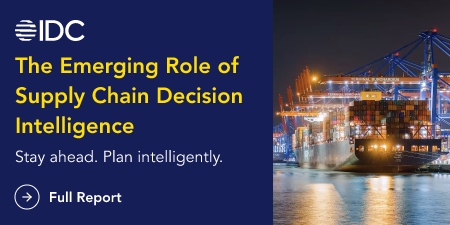
Author: Z. Caner Taşkın
Optimization is a beautiful thing – it can give businesses the power to transform and revolutionize their planning, processes, and practices and reach unprecedented heights of efficiency and profitability.
As a technologist and academic, I have built my entire career around this concept and have dedicated my professional life over the past two decades to developing world-class supply chain optimization solutions.
And so it pains me to admit that – although algorithm-based supply chain optimization technologies have made great strides over the years and are now more robust, fast, and flexible than ever – I still don’t think that most supply chain companies are reaping the maximum business value from their investment in these tools.
In order to realize this potential, companies must stop seeing optimization as the “silver bullet” that can on its own magically deliver a perfect solution to any planning and operational challenge, and start seeing optimized decisions (rather than optimization itself) as the ultimate goal of implementing a supply chain optimization software platform.
Enabling optimized decisions (or “decision-centric optimization”) is the key to unlocking the true business value of supply chain optimization technologies.
But before discussing how companies can make the move forward from optimization to optimized decisions, let’s first take a quick look back at how optimization technologies have developed over the past few decades.
The evolution of optimization solutions
Optimization technologies have evolved tremendously since they were introduced in the supply chain world in the 1970s.
Initially, supply chain optimization tools were used by companies mainly as calculation engines that would be fed input data and would then crunch numbers and generate some sort of mathematical output. It was then up to the planners and other key stakeholders to manually interpret, analyze, and apply this mathematical output to their business processes. Needless to say, this was quite a demanding undertaking – and these optimization software solutions often failed to yield the business value they were supposed to.
Since then, supply chain optimization solutions have developed phenomenally. Over time, these solutions have matured remarkably in terms their ability to collect and intelligently collate data from various sources including ERP systems and IoT devices and run optimization algorithms using that data. Optimization solutions have also made significant strides in terms of reporting: from text files containing purely mathematical output to real-time, optimal plans, reports, and charts.
And, of course, the core underlying optimization technology of these solutions has improved immensely through the years. Indeed, optimization engines today are more powerful than ever – capable of optimally solving many complicated supply chain problems that were thought to be intractable just a decade ago.
But – even though supply chain optimization solutions underwent these enhancements – they are still, in most instances, unable to deliver “optimal” business value.
I think this is primarily due to several factors:
- Limited interaction between users and the system: Although the technology of optimization solutions evolved, the core input/output mechanism always remained the same: data was funneled into the solution, which in turn produced a plan or report of some kind (that provided insights and guided business decisions). In order for optimization solutions to produce peak performance and bottom-line benefits, there needed to be a seismic shift in this fundamental dynamic – and this has started over the past decade. Optimization solutions have evolved to become interactive environments – where users can engage with the system (by, for example, exploring various scenarios and collaborating with other users), actively shape the output of the optimization engine (by, for example, adding new constraints on the fly or recalibrating plans based on changing KPIs), and utilize that output to make the best possible business decisions.
- Lack of integration with various data sources and company-specific decision processes: To deliver maximum business value, supply chain optimization solutions must be able to provide a holistic platform that is fully integrated with each company’s data collection systems and decision making processes, and supports various problem-solving techniques besides optimization (including heuristics, routing, scheduling, machine learning, and artificial intelligence algorithms and others).
In response to these issues, there has been a growing demand in the market for data-driven and decision-centric solutions that support multiple users, multiple scenarios, and multiple problem-solving techniques.
Looking to the future
In recent years, we have witnessed a major paradigm shift, as an increasing number of supply chain companies are looking for integrated, interactive solutions that give them the power to make optimized decisions – which drive the highest levels of operational efficiency, delivery performance, and bottom-line results.
Indeed, optimized decisions – and not the optimization of plans and schedules – should be the goal of implementing an intelligent supply chain planning and scheduling solution.
To be clear, I’m not advocating that supply chain companies move away from optimization technologies – as optimization algorithms are a pivotal and powerful tool and should be a central component of any supply chain planning and scheduling software platform. But optimization alone is not sufficient.
To enable businesses to truly harness the operational and financial benefits that optimization can deliver, optimization algorithms must be a part of an integrated and interactive environment that gives users the capability to collaborate to create optimal, data-driven plans and make the best possible business decisions and take the right actions.
Now is the time for companies to unleash the full potential of optimization technologies by investing in an integrated, intelligent software platform that empowers them to achieve decision-centric optimization.
If you would like to see ICRON in action, please contact us. If you have enjoyed this blog, you can find more content that you might enjoy here.













